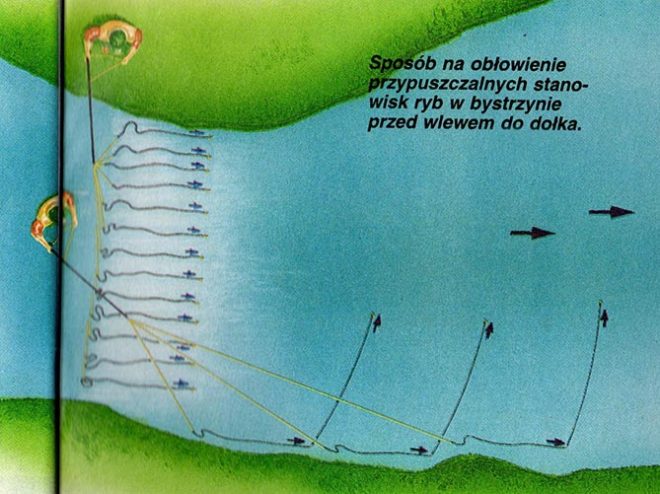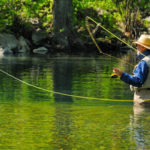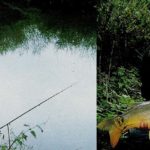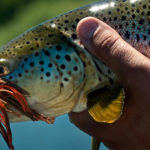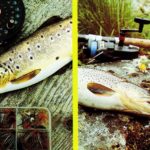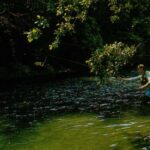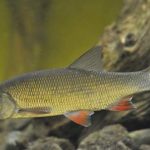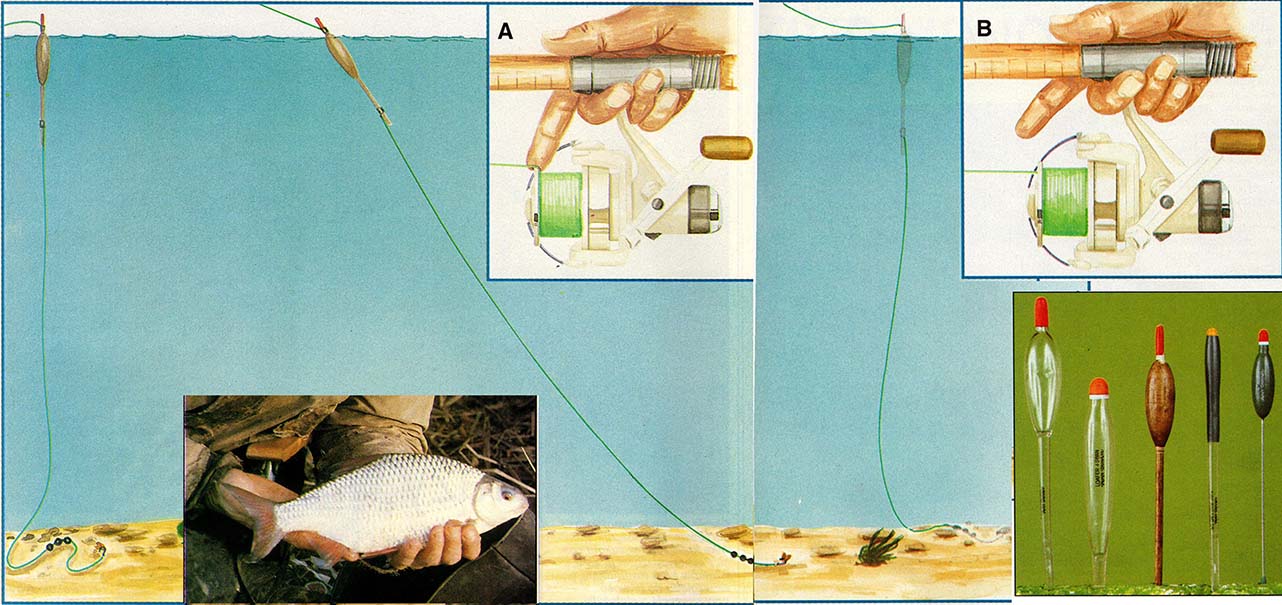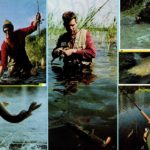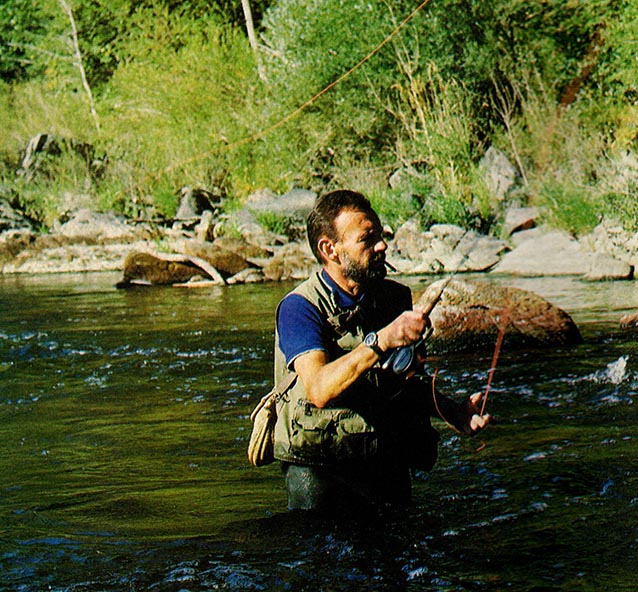 „Szybka woda” odstrasza wielu muszkarzy. Roger Wust uważa, że to błąd. Po opanowaniu odpowiedniej techniki wędkowania można skutecznie łowić na sztuczną muchę nawet w najszybszym prądzie.
„Szybka woda” odstrasza wielu muszkarzy. Roger Wust uważa, że to błąd. Po opanowaniu odpowiedniej techniki wędkowania można skutecznie łowić na sztuczną muchę nawet w najszybszym prądzie.
Szybka woda to określenie dość często używane przez wielu muszkarzy. Miejsca z wartkim prądem są przeważnie dość płytkie (na przykład bystrzyny przed wlewem do głębszego dołka, przewężenia rzeki, odcinki poniżej progów wodnych) i raczej nie wyglądają zbyt zachęcająco. Poza tym, w bystrzynach rzadko kiedy udaje się zaobserwować wychodzące do powierzchni ryby, a tym samym muszkarzowi brakuje jednego z najistotniejszych bodźców zachęcających go do dokładnego obłowienia danego miejsca.
Pomimo tego odcinki „szybkiej wody” są dla mnie jednymi z najbardziej atrakcyjnych miejsc w rzece. Na odniesienie sukcesu w bystrzynach możemy jednak liczyć dopiero po idealnym opanowaniu odpowiedniej techniki łowienia na sztuczną muchę.
Dokładna obserwacja
Nawet podczas bardzo dokładnego przyglądania się „szybkiej wodzie” rzadko kiedy udaje się zauważyć wychodzące do powierzchni ryby. Nie należy jednak od razu wyciągać z tego pochopnych wniosków, nawet jeżeli na spokojnej wodzie poniżej pobliskiego dołka, raz za razem pojawiają się kółka świadczące o dobrym żerowaniu. Nie oznacza to bowiem, że w bystrzynach nie ma ryb. Pstrągi i lipienie stojące w „szybkiej wodzie” także regularnie wychodzą do fauny unoszonej, a cały dowcip polega na tym, o czym już wspomniałem, że bardzo trudno to zauważyć. Prąd wody jest po prostu zbyt szybki i na powierzchni nie tworzą się charakterystyczne kółeczka świadczące o zbieraniu suszu. Jedynie dokładna obserwacja wytypowanego wcześniej miejsca pozwala niekiedy zaobserwować krótki srebrny błysk zdradzający obecność pstrąga. Szybki prąd wody wymusza na rybach natychmiastową reakcję. Albo od razu decydują się na pochwycenie unoszonego owada, albo za chwilę będzie już za późno. Ze względu na to, że w bystrzynach na dziesięć wychodzących ryb udaje się nam zaobserwować co najwyżej jedną, często odnosimy błędne wrażenie, że w takich miejscach łowienie na suchą muchę nie ma najmniejszego sensu.
 Sposób na obłowienie przypuszczalnych stanowisk ryb w bystrzynie przed wlewem do dołka.
Sposób na obłowienie przypuszczalnych stanowisk ryb w bystrzynie przed wlewem do dołka.
